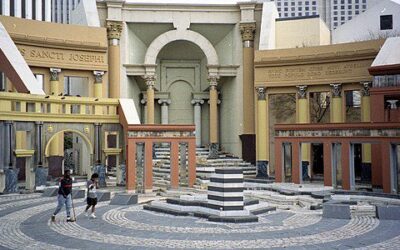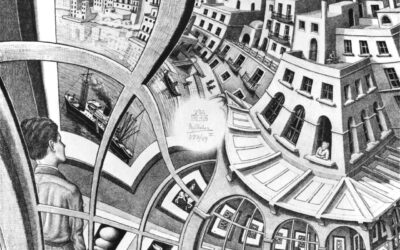The Psychology of Colonial Architecture

Colonial architecture stands as a testament to America’s rich historical tapestry, embodying the spirit of early settlers and their quest for identity in a new world. This architectural style, prevalent from the 1600s to the mid-1800s, continues to influence modern design and captivate the imagination of homeowners and architects alike. In this comprehensive exploration, we’ll delve into the origins, characteristics, and psychological underpinnings of Colonial architecture, examining its relevance in today’s architectural landscape.
The Historical Roots of Colonial Architecture
Colonial architecture in America emerged as European settlers, primarily from England, France, Spain, and the Netherlands, established their presence in the New World. Each colonial power brought its distinctive architectural traditions, adapting them to local materials and climate conditions. This fusion of Old World design and New World practicality gave birth to a uniquely American architectural identity.
Key Characteristics of Colonial Architecture:
- Symmetry and balance in design
- Central chimneys or paired chimneys
- Multi-pane windows with shutters
- Simple, functional floor plans
- Use of local materials (wood in New England, brick in the South)
- Steep roofs with little overhang
- Central front door, often with decorative crown and columns
A Dialectical Materialist Perspective on Colonial Architecture
From a dialectical materialist viewpoint, Colonial architecture can be seen as a physical manifestation of the socioeconomic conditions and power structures of early American society. The development of this architectural style was driven by the material realities of colonial life, including:
- Available resources: The use of local materials reflected the economic constraints and supply chains of the time.
- Climate adaptation: The design elements, such as steep roofs for snow shedding in New England, were practical responses to environmental conditions.
- Social hierarchy: The grandeur of some Colonial homes, particularly in the South, mirrored the class distinctions and economic disparities of colonial society.
- Cultural synthesis: The blending of European styles with indigenous influences represents the dialectical process of cultural exchange and adaptation.
The evolution of Colonial architecture over time can be understood as a series of contradictions and syntheses between Old World traditions and New World necessities, resulting in a uniquely American architectural language.
Jungian Depth Psychology and Colonial Architecture
Through the lens of Jungian depth psychology, Colonial architecture can be interpreted as a collective expression of the American psyche during its formative years. Several archetypes and psychological themes emerge:
The Home Archetype:
Colonial architecture, with its emphasis on symmetry and order, represents the fundamental human need for shelter and security. The centrality of the hearth (fireplace) in these homes symbolizes the psychological warmth and nurturing associated with the maternal archetype.
The Hero’s Journey:
The adaptation of European styles to the American frontier can be seen as a architectural representation of the hero’s journey archetype, symbolizing the settlers’ quest for identity and self-realization in a new land.
The Shadow:
The grand facades of some Colonial homes, particularly in the South, may be interpreted as a collective attempt to project an image of refinement and civilization, potentially masking the darker aspects of colonial society, such as slavery and indigenous displacement.
Individuation Process:
The gradual development of distinct regional Colonial styles (e.g., New England, Southern, Dutch) mirrors the Jungian concept of individuation, as the collective American psyche sought to differentiate itself from its European origins.
The Ego Perspective: Cultural Assertions and Insecurities
From an ego perspective, Colonial architecture can be seen as an attempt by early American society to assert its cultural identity and legitimacy. This architectural style served several ego-driven purposes:
Establishing Legitimacy:
By emulating and adapting European styles, Colonial architecture sought to assert the cultural legitimacy of the new settlements, positioning them as extensions of established civilizations rather than frontier outposts.
Projecting Stability:
The symmetry and ordered appearance of Colonial buildings projected an image of stability and permanence, potentially masking the uncertainties and challenges of life in the New World.
Social Status Signaling:
More elaborate Colonial homes served as status symbols, allowing wealthy colonists to assert their position in the social hierarchy.
Cultural Nostalgia:
The incorporation of familiar European elements in Colonial architecture may have served as a psychological anchor, providing comfort and continuity for settlers in an unfamiliar environment.
Simultaneously, Colonial architecture reveals certain insecurities of the early American psyche:
Fear of the Unknown:
The emphasis on symmetry and order in Colonial design may reflect a subconscious desire to impose familiarity and control over the perceived chaos of the New World.
Cultural Inferiority Complex:
The initial reliance on European architectural traditions could be interpreted as an expression of cultural insecurity, with the colonies seeking validation through imitation of the Old World.
Identity Crisis:
The gradual evolution of Colonial styles reflects an underlying struggle to define a unique American identity, distinct from yet connected to European roots.
Mortality Salience:
The durability and permanence of Colonial architecture may have served as a psychological buffer against the harsh realities of frontier life, including high mortality rates.
Colonial Architecture in Modern Context
Despite its historical origins, Colonial architecture continues to exert a powerful influence on American design. The enduring appeal of this style can be attributed to several factors:
Nostalgia and Heritage:
Colonial-style homes evoke a sense of historical continuity and cultural heritage, appealing to those seeking a connection to America’s past.
Perceived Stability:
In times of social and economic uncertainty, the ordered symmetry of Colonial design may provide a psychological sense of stability and security.
Adaptability:
Colonial architecture has proven remarkably adaptable to modern lifestyles, with open floor plans and contemporary amenities easily incorporated into traditional designs.
Environmental Considerations:
Many principles of Colonial architecture, such as the use of local materials and climate-responsive design, align with current trends in sustainable building practices.
The Enduring Legacy of Colonial Architecture
Colonial architecture represents more than just a historical style; it is a complex interplay of cultural, psychological, and material forces that continue to shape American identity. By understanding the deeper meanings and motivations behind this architectural tradition, we gain insight into the collective psyche of early America and its ongoing influence on contemporary design.
As we move forward in an era of rapid technological advancement and global interconnectedness, Colonial architecture serves as a tangible link to our past, reminding us of the enduring human need for identity, security, and cultural expression. Whether viewed through the lens of dialectical materialism, Jungian psychology, or contemporary design trends, Colonial architecture remains a rich subject for study and inspiration, offering valuable lessons for architects, homeowners, and students of American culture alike.
Read about the Psychology of Other Styles of Architecture
The Psychology of Architecture
The Psychology of Architecture
























0 Comments